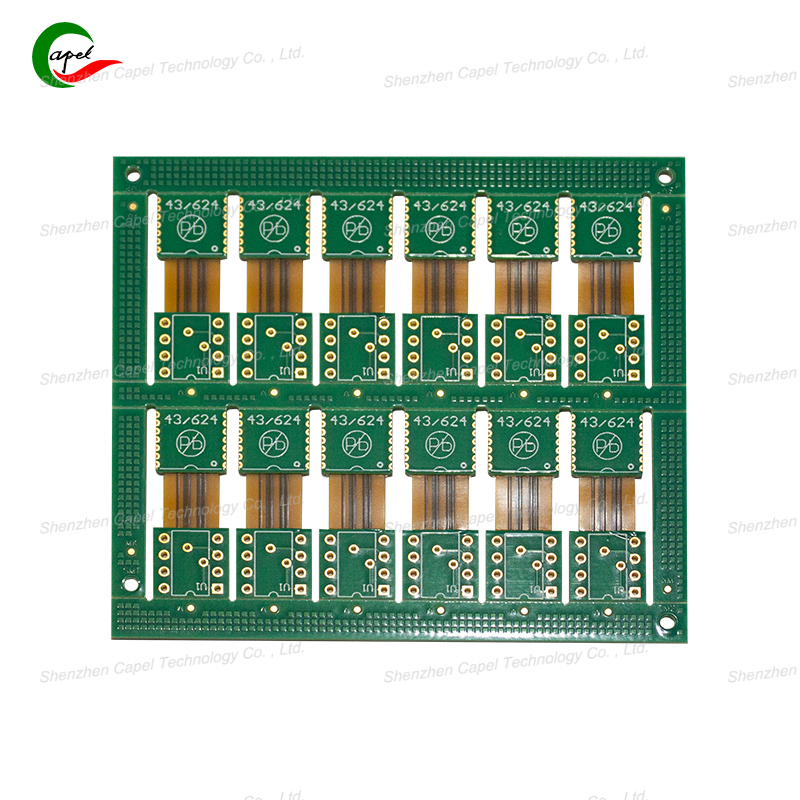Date: 2025-10-21
If you're working with high-frequency rigid-flex PCBs that need to bend during operation, you've likely encountered this frustrating scenario: your carefully calculated 50Ω impedance shifts dramatically when the board flexes, causing signal integrity issues that only appear after hundreds of operating cycles.
The problem isn't your initial design – it's what happens when copper traces and dielectric materials physically change shape during bending. After working through these challenges on 5G foldable devices and robotic systems, we've found that controlling this drift requires building compensation directly into your design from the start.
Three physical changes occur during flexing that impact impedance:
Dielectric Constant Variation
When polyimide bends, its molecular structure stretches – changing the Dk value by 5-15%. Since impedance is inversely proportional to the square root of Dk, this creates immediate impedance shifts. We've measured Dk variations from 3.2 to 4.4 on the same material during different bending scenarios.
Trace Spacing Compression
At tight bend radii (1x board thickness), adjacent traces can move 20% closer together due to substrate deformation. For differential pairs with 0.3mm spacing, this spacing reduction alone can drop impedance by 8-12%.
Trace Geometry Distortion
Bending transforms rectangular traces into elliptical shapes, increasing effective width and reducing impedance. This effect becomes particularly problematic at bend radii ≤1x board thickness.
Here's how we build impedance stability into our high-frequency flex designs:
Material Selection – The Foundation
Use High-Stability PI: We specify grades like DuPont Kapton® HN that show ≤±2% Dk variation during bending, compared to ±5% for generic alternatives
Consider Fluoropolymer Coatings: A thin 10μm coating can reduce Dk drift by 30% by stabilizing the substrate during bending
Match Copper CTE: Using 18-25μm foil with CTE matching the PI (around 50 ppm/°C) minimizes mechanical mismatch
Impedance Overdesign – The 5-8% Rule
For a target 50Ω impedance, we design our static impedance to 52.5-54Ω. The natural impedance reduction during bending then brings it into the target range. This simple approach has solved more impedance problems than any other single technique in our experience.
Geometric Compensation
Trapezoidal Traces: Traces with top width 0.8x bottom width show 40% less impedance variation during bending
Increased Spacing: We add 10-15% spacing margin over static calculations to account for natural compression during bending
Neutral Axis Routing: Placing high-frequency traces along the middle layer of multi-layer flex cuts impedance drift by 50%
Structural Reinforcement
Gradual Transitions: 0.5-1.0mm radius curves at rigid-flex interfaces spread bending stress evenly
Strategic Reinforcement: 25-50μm PI reinforcement near (but not covering) trace bends stabilizes the substrate
When to Use Passive Components
For frequencies ≥5GHz, sometimes you need extra help:
0402 chip capacitors (1-10pF) parallel to drift-prone segments
0603 resistors (50Ω) in series with long traces
*Critical: Keep components ≥1mm from bend zones and use flex-rated versions*
Validation Methods That Matter
Bend Testing: 1,000 cycles at operational radius while monitoring with VNA
Dk Measurement: ≤±2% variation after bending indicates effective stabilization
Signal Integrity: Clean eye diagrams at 5GHz through bent PCB confirm stability
Assuming All PI Is Equal – Generic polyimide guarantees drift beyond acceptable limits
Overcompensation – Designing >10% above target causes signal reflection issues
Using Rigid Components – Through-hole parts detach during bending
Trace Crowding – No room for natural spacing shrinkage during bending
Successful impedance management in bending rigid-flex PCBs requires:
Materials selected for stability under flex
Intentional overdesign to account for physical changes
Geometric strategies that compensate rather than fight the bending
Validation under actual operating conditions
By building these principles into your design process, you can maintain impedance within ±5% through thousands of flex cycles – making your high-frequency rigid-flex designs work reliably in real-world applications where bending happens.
related link:
Kaboer manufacturing PCBs since 2009. Professional technology and high-precision Printed Circuit Boards involved in Medical, IOT, UAV, Aviation, Automotive, Aerospace, Industrial Control, Artificial Intelligence, Consumer Electronics etc..